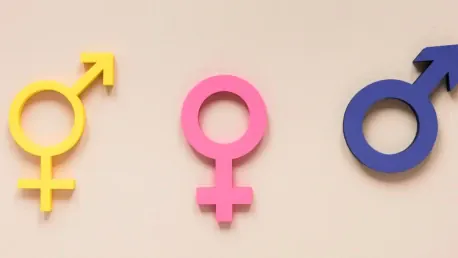The article explores the complex legal and societal discussions surrounding Title IX regulations concerning sexual orientation and gender identity discrimination in federally funded education programs. It covers recent injunctions, legal precedents, and various court rulings, outlining the ongoing debate, legal complexities, and implications for public schools and colleges across the United States.
The Foundation of Title IX Regulations
Understanding Title IX
Title IX of the Education Amendments of 1972 is a federal civil rights law that prohibits sex-based discrimination in any school receiving federal funds. The Department of Education, in April 2024, introduced new regulations to extend protections to include discrimination based on sex stereotypes, sexual orientation, and gender identity, ensuring no person faces sex-based harassment or sexual violence in federally funded education.
Prior to these updates, Title IX protections were primarily focused on addressing gender discrimination without specifically encompassing sexual orientation and gender identity. This legal gap led to numerous instances where students faced discrimination and harassment but lacked explicit protections under Title IX, fueling a strong push from advocacy groups and impacted communities for more inclusive coverage. The 2024 regulations were seen as a landmark advancement towards safeguarding the rights and dignity of all students, regardless of their sex, sexual orientation, or gender identity.
The Legal Landscape Before Recent Changes
Before these new regulations were introduced, Title IX’s scope was mostly limited to addressing traditional gender discrimination, leaving out explicit safeguards for sexual orientation and gender identity. This limitation had wide-reaching effects, as it meant many students faced significant discrimination and harassment based on their identities without the law’s express protection. The absence of these explicit protections created an environment where educational institutions were not uniformly required to address or prevent such discrimination, resulting in patchy and inconsistent protections for students.
This exclusion led to numerous legal battles and advocacy efforts aimed at expanding Title IX’s coverage to ensure comprehensive protections for all students. The push for more inclusive regulations was driven by the recognition that students facing discrimination based on sexual orientation and gender identity often experienced severe impacts on their educational opportunities and overall well-being. By expanding the regulations in April 2024, the Department of Education aimed to address these gaps and provide clearer, more robust protections against discrimination in the educational environment.
Origins and Current Legal Challenges
Emergence of Lawsuits
Lawsuits challenging the new Title IX rules emerged immediately after the Department of Education released the final set of regulations. Plaintiffs included various states and organizations, leading to multiple injunctions that have temporarily blocked the implementation of the new rules in 26 states. These lawsuits argue that the Department of Education exceeded its authority by interpreting Title IX through the lens of the 2020 Supreme Court decision in Bostock v. Clayton County, which addressed employment discrimination under Title VII of the Civil Rights Act but did not explicitly extend to Title IX.
The legal challenges focus on the Department’s authority and the process by which it extended Title IX protections to cover sexual orientation and gender identity. Opponents argue that such a significant policy shift requires congressional action rather than administrative regulation. As a result, numerous federal courts have issued temporary injunctions, halting the new regulations’ implementation while the legal battles unfold. This has created a state of limbo for schools and colleges, which now face uncertainty regarding their obligations under Title IX.
Notable Injunctions and Judicial Opinions
Notable injunctions from courts, such as the 11th Circuit Court of Appeals and individual judges like John Broomes and Terry Doughty, reveal significant judicial skepticism towards the new regulations. These courts have critically assessed the Department of Education’s authority to extend protections under Title IX based on the Bostock precedent. Judge Broomes, for example, cited that Bostock was specifically related to employment under Title VII and that its principles should not directly apply to Title IX without further legislative clarification.
Chief Judge Terry Doughty’s injunction echoed similar concerns, emphasizing that the Supreme Court’s decision in Bostock did not explicitly extend to other federal statutes like Title IX. Judges like Broomes and Doughty have relied heavily on the Administrative Procedures Act (APA) to critique the process by which the Department of Education introduced the new regulations. Under the APA, they argue that the Department overreached its interpretative authority, which requires more rigorous judicial scrutiny and adherence to procedural norms. These judicial opinions underscore the ongoing tension between administrative agencies’ interpretative reach and the courts’ role in maintaining statutory limits.
The Bostock v. Clayton County Precedent
Impact of the Supreme Court Ruling
A significant portion of the debate revolves around the Supreme Court’s 2020 decision in Bostock v. Clayton County. The Court ruled that Title VII of the Civil Rights Act prohibits discrimination based on sexual orientation. This decision has been pivotal in extending similar protections under Title IX. The Bostock ruling marked a major milestone in anti-discrimination law, recognizing that firing an employee simply for being gay or transgender constitutes sex discrimination. This landmark decision significantly shaped subsequent interpretations of federal anti-discrimination laws.
Advocates for extending Title IX protections argue that the principles established under Bostock logically and morally extend to educational environments. They contend that just as employment discrimination on the basis of sexual orientation and gender identity is unlawful, so too should be discrimination in schools and colleges. This extension, they argue, is necessary to provide consistent and comprehensive protections across various aspects of public life. However, applying Bostock to Title IX has been met with resistance, facing detailed scrutiny and legal challenges from various quarters.
Judicial Scrutiny of Bostock’s Applicability
Numerous federal judges have scrutinized the extension of Bostock to Title IX, citing its explicit applicability only to Title VII. Judges have leveraged the Administrative Procedures Act (APA) to question the statutory authority of the Department of Education’s expanded interpretation. Judge John Broomes, for instance, argued that Bostock’s principles were bound by its context within Title VII and should not be broadly applied to Title IX without explicit congressional direction.
Judges who oppose the extension have highlighted that the Supreme Court’s ruling in Bostock was narrowly tailored to employment discrimination, a key context of Title VII, and not educational settings governed by Title IX. They express concerns that the Department of Education’s attempts to expand these protections without additional legislative guidance overstep administrative boundaries. The reliance on the APA reflects the need to ensure that regulatory changes are procedurally sound and within the scope of delegated authority, maintaining a balance between administrative action and legislative intent.
Divergent Judicial Rulings
Judicial Opinions Opposing Extension
Several judicial opinions have opposed using Bostock as the basis for new Title IX rules. Judges like John Broomes and Terry Doughty have emphasized that the Supreme Court did not extend Bostock to other federal laws and highlighted a split among lower courts on this issue. Judge Broomes criticized the Department of Education for not adequately considering the distinct contexts of Titles VII and IX, asserting that the agency’s regulations require a more reasoned alignment with statutory frameworks.
Judge Doughty, in his injunction, expanded on these concerns by pointing out that attempts to apply Bostock to Title IX without clear legislative intent could lead to inconsistent legal interpretations and enforcement challenges. The dissenting judicial opinions stress the importance of adhering closely to the legislative scope and procedural norms when extending anti-discrimination protections. These rulings underscore a broader legal debate about the limits of administrative regulation in shaping civil rights protections.
Examples of Supporting Judicial Opinions
Conversely, some court rulings have supported broader interpretations of Title IX in line with Title VII. Decisions by the Seventh Circuit Court of Appeals and rulings in cases like Grimm v. Gloucester and Doe v. Boyertown have upheld inclusive interpretations that protect transgender rights. In Grimm v. Gloucester, the Fourth Circuit Court of Appeals ruled in favor of a transgender student, Gavin Grimm, asserting that Title IX and the Equal Protection Clause prohibit denying transgender students access to bathrooms aligned with their gender identity.
Similarly, the Seventh Circuit Court of Appeals upheld policies that allow transgender students to use bathrooms consistent with their gender identity, ruling that such measures are consistent with the principles of non-discrimination laid out in Title IX. In Doe v. Boyertown, the Third Circuit upheld a school district’s policy allowing transgender students to use facilities matching their gender identity, concluding that the policy did not violate Title IX or students’ privacy rights. These decisions demonstrate a judicial willingness to interpret Title IX in a more inclusive manner, extending protections originally framed under Title VII to the educational context.
Legal Interpretations and Key Themes
Analyzing Legal Interpretations
The debate hinges on how Title IX is interpreted in light of Bostock. Plaintiffs argue the Department of Education overstepped by extending Bostock’s rationale to Title IX, which they contend should have a narrower application. The legal contention primarily revolves around statutory interpretation and the scope of administrative power. Those in favor of extending protections argue that Bostock’s principles logically extend to prevent discrimination in education, advocating for a broad and inclusive interpretation of anti-discrimination laws.
On the contrary, opponents argue that such an expansion requires explicit legislative action, not administrative regulation. They emphasize that Title IX was not originally intended to cover sexual orientation and gender identity discrimination and that any significant extension of its scope should be enacted by Congress. This split in interpretations highlights fundamental questions about the role and limits of administrative agencies in interpreting and applying federal civil rights laws.
Administrative Authority and Recent Precedents
Recent precedents and the APA have been pivotal in these judicial debates. Judges critically evaluate the Department of Education’s regulations, questioning the appropriate level of deference to agency interpretations extended from Bostock. These judicial reviews emphasize the importance of procedural rigor and statutory alignment in administrative rule-making. The APA provides a framework for such evaluations, ensuring that regulations are not only procedurally sound but also within the statutory scope set by Congress.
Judiciary skepticism towards the Department’s extension of protections underscores a broader concern about maintaining the balance of power between legislative intent and administrative interpretation. Judges have pointed to recent Supreme Court decisions, suggesting a more critical approach towards expansive administrative interpretations that lack clear legislative backing. These factors collectively shape the ongoing legal landscape, influencing how civil rights protections are understood and enforced in educational settings.
Implications on Public Schools and Colleges
Impact of Injunctions
Injunctions blocking new Title IX rules imply significant legal uncertainty for public schools and colleges. Institutions must navigate these legal challenges while awaiting further judicial clarification. The temporary nature of these injunctions means that schools are in a state of flux, needing to balance compliance with evolving regulations against the potential for further legal changes. This uncertainty can create administrative challenges, including revising policies, training staff, and ensuring a safe and non-discriminatory environment for all students.
Schools must also be aware of potential legal liabilities as they navigate these contested waters. The mixed judicial signals on Title IX’s application mean that schools could face lawsuits from either side—those advocating for more inclusive protections or those opposing them based on current interpretations. The ambiguity also impacts students who seek clear and consistent protections against discrimination, creating an urgent need for definitive judicial and legislative guidance.
Future Implications and Uncertainty
The article delves into the intricate legal and societal debates surrounding the interpretation and implementation of Title IX regulations, particularly regarding discrimination based on sexual orientation and gender identity within federally funded educational programs. It highlights recent court injunctions, pivotal legal precedents, and various rulings that have shaped the current landscape. The ongoing debate is marked by legal complexities and has significant implications for public schools and colleges nationwide.
Title IX, a federal law prohibiting discrimination based on sex in education, has seen evolving interpretations to include protections for sexual orientation and gender identity. This expansion has prompted a series of legal battles, with some courts upholding these protections and others questioning their validity. Recent injunctions have temporarily halted the enforcement of certain provisions, reflecting a broader contentious legal environment.
Educational institutions find themselves navigating a legal minefield as they strive to comply with varying interpretations of Title IX. These legal challenges impact policies on campus, the rights of students and staff, and the overall inclusivity of educational environments. As courts continue to adjudicate on these matters, the nation watches closely, knowing the outcomes will shape the future of educational equity and civil rights in America.









